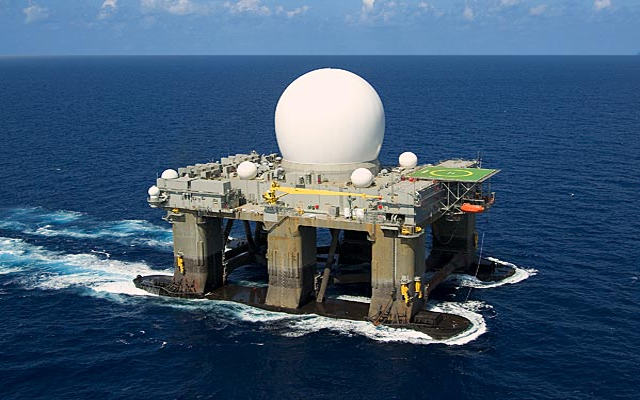Marketing Automation – Intelligence Required

Sea-Based X Band Radar – Boeing Company
This is the fourth in a series of excerpts from Allinio’s white paper Net-Centric Marketing & Information Superiority.
The “ISR” Portion:
Intelligence, Surveillance & Reconnaissance
Gathering market data has become more critical than ever. Net-Centric Marketing allows for a scale of collecting and processing data never before seen. The ability to conduct polling over the web has been prevalent for years but in the past few years survey technologies have increased in sophistication and can be implemented rapidly; Marketers can now see answers to questions and trends as they are entered directly by the survey respondents.
With social networking platforms exploding, it is imperative for marketers to gather and use information from the conversations they observe or have with users and to connect the relational associations that exist online. The various associations that users collectively create will become a vast and intricate matrix of data that will be suitable for sophisticated data mining and will serve as an ongoing source of information that influences product and marketing decisions.
Social Network Analysis (SNA) tools can be used by the Net-Centric Marketer to collect data from individuals and their rings of networks. These tools allow the accumulation of a considerable volume of data collected from a diverse and complex set of relationships, the analysis of the data and the relationships behind that data, and predictive outcomes.
Data on what is being written in blogs, who is linking to them or getting Really Simple Syndication (RSS) feeds from them, and other statistics can be gathered for analysis from such tools as Feedburner.
Physical Surveillance of the Marketing Environment
Mobile and location-aware technologies dovetail well into ISR. These technologies, such as global positioning systems (GPS), assisted GPS (A-GPS), Enhanced Observed Time Difference (EOTD), enhanced GPS (E-GPS), Radio Frequency Identification (RFID), and others can be used throughout a cellular or other network to locate users and objects. The users themselves can use this technology – for instance, a salesperson can already drive to a destination with the help of onboard GPS, but imagine finding a prospect in a noisy, crowded convention center where one cannot hear the other over the cell phone so needs another method of search.
Technologically astute companies looking for low-cost sensing and robust self-organizing networks with small data transmission volumes should explore sensor networking. For example, a convention management company, which currently may lease badge readers to exhibitors, will now be able to install a sensor mesh network throughout the tradeshow facility.
Acting as a dynamic mesh of peer nodes, each of which includes simple networking, computing and sensing capability, the sensor mesh network can interface with RFID-embedded badges that tell premium paying exhibitors who is coming down the aisle towards their booth, enabling the attendants to watch out for specific prospects that may be more inclined to buy their products and services.
Additionally, these sensor mesh networks can document traffic flow through the trade show floor help determine future floor plan design and pricing schemes for booth locations of future events. Exhibitors could also have a better approximation of traffic numbers by their booth and make better rental decisions in the future.
A scenario like this could also be captured for analysis via a video system; organizations such as retailers and casinos are already using digital video for security reasons and the same systems can be used by Marketers to gather information. Given the better resolution, search, and playback capabilities of newer digital video technologies, marketers will be able to mine information and achieve a better understanding of both individual and crowd behaviors in general traffic and point of sale areas. Such knowledge in turn will allow them to provide actionable intelligence to their sales channels, whether they are self service kiosks or even sales clerks on the retail store floor.
This is the fourth in a series of excerpts from Allinio’s white paper Net-Centric Marketing & Information Superiority. Click here to read the previous excerpt online. Stay tuned to this blog for the next excerpt.
